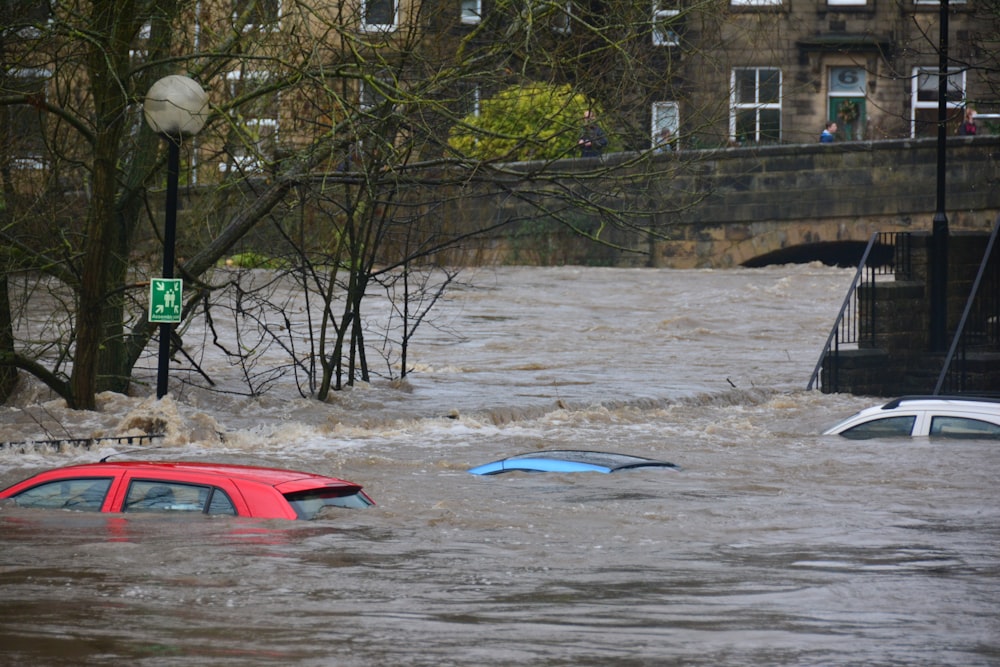Through many hearts are breaking
And many tears are shed
So many houses broken
Too many people dead
God summoned his angels
Sent them to the disaster zone
To deliver their tiny perfect wings
So they didn’t travel alone.
~Sally
Over the past decade, around three hundred natural disasters have occurred yearly worldwide, affecting millions and caused damages of billions. The displacement/ migration is evident after a disaster strikes an area, leaves millions homeless, and forces to move in temporary crowded shelters with little to no access to drinking water or food in a few days to rescue operation. Such living conditions often result in the spread of infectious diseases like Dengue, Tetanus, Malaria, and others. These natural disasters have also caused a substantial economic burden, from 2000 to 2009, they brought about approx. 891 billion dollars damage worldwide that include houses and mega infrastructure.
How many of us blame ourselves for this steady rise in natural disasters? None can ignore the fact that many of these calamities were man-made; they strike due to environmental degradation caused by global warming. Now slowly but at least not too late, mankind realizes that its greed has brought destruction to the earth’s natural systems.
When the desire for fast profits and growth beats the vision of sustainability, nature retaliates in the form of disaster. Our activities after the industrial revolution play a vital role in the fast pace of natural disasters worldwide. By supporting unsustainable developments, we caused deforestation that leads to more floods and land sliding. The sprawling cities with zero to no urban planning and increasing fossil fuel consumption impacted our environment and made changes in weather patterns.
With this edition, we aim to challenge media-driven stereotypes of disasters. More often than not, a disaster reported in Pakistan has a very short life; after a few photo sessions and press conferences by the officials, our media started playing political or showbiz beats.
Much of the rainforests are being clear-cut to make ways for cattle ranches. This led to deforestation and global warming, destroyed animal habitats, and also disrupted the water cycle. Without trees to absorb rainwater, floods and soil erosion is evident in many parts of the world where forests were mercilessly killed. Besides causing massive flooding, deforestation led to severe and prolonged periods of drought because forests are an essential part of the water cycle, bringing groundwater to the atmosphere, fewer trees means fewer rains, increasing the risk of drought.

The global warming caused by the industrial revolution has a profound impact on global weather patterns. The increase in atmospheric temperature resulted in speedy glaciers melting and bringing changes to oceans’ temperature. The coastal areas are under threat of high-intensity cyclones and storms from July to September. The constant rate of increase in ocean temperature will lead to more intense storms.
When a hurricane sweeps away entire houses, a flood seeps in through every corner of our lives, or a wildfire turns a dense forest into ashes, it leaves us speechless and miserable. But if we want to upgrade our reaction against natural disasters, we need to talk about them.
Pakistan geologically overlaps both with the Indian and Eurasian tectonic plates; two-thirds of Pakistan’s total area lies in fault zones that can cause tremors anytime. Pakistan is among the highly vulnerable countries due to climate change; massive floods, prolonged drought, cyclones, land sliding, glaciers melting, and earthquakes, we are destined to live with disasters.
Scientia Pakistan is launching its exclusive edition on Natural disasters to spread awareness about why natural disasters are evident and what we need to learn to stop their growing pace. We reached out to the acclaimed geologist of Pakistan, Dr. Qasim Jan, and Dr. Nayyer Alam Zaigham, to discover the geological changes in the region and how man-made activities are causing harm to the environment. For a more detailed understanding, there are stories of the most devastating natural disasters that hit different parts of the world during the last two decades. Moreover, we covered the role of remote sensing and GIS techniques for an effective disaster management policy and post-disaster rescue operation.
With this edition, we aim to challenge media-driven stereotypes of disasters. More often than not, a disaster reported in Pakistan has a very short life; after a few photo sessions and press conferences by the officials, our media starts playing political or showbiz beats. The media is ignorant of the fact that a minor calamity could cause far-reaching and long-lasting effects. The situation needs to be examined both by the governments and local communities. We want to enable the layperson to effectively play his role in a disastrous situation such as we faced in the Oct 2005 earthquake, 2010, and 2020’s massive flooding.
Have a good read.
Cheers!

Saadeqa Khan is the founder, CEO, & Editor-in-Chief of Scientia Pakistan. She’s a member of the Oxford Climate Journalism Network (Second Cohort) and NASW. Saadeqa is a fellow of NPF Washington, The Falling Walls Foundation, and the Science Journalism Forum. Saadeqa has won several international journalism grants and awards for her reports.

